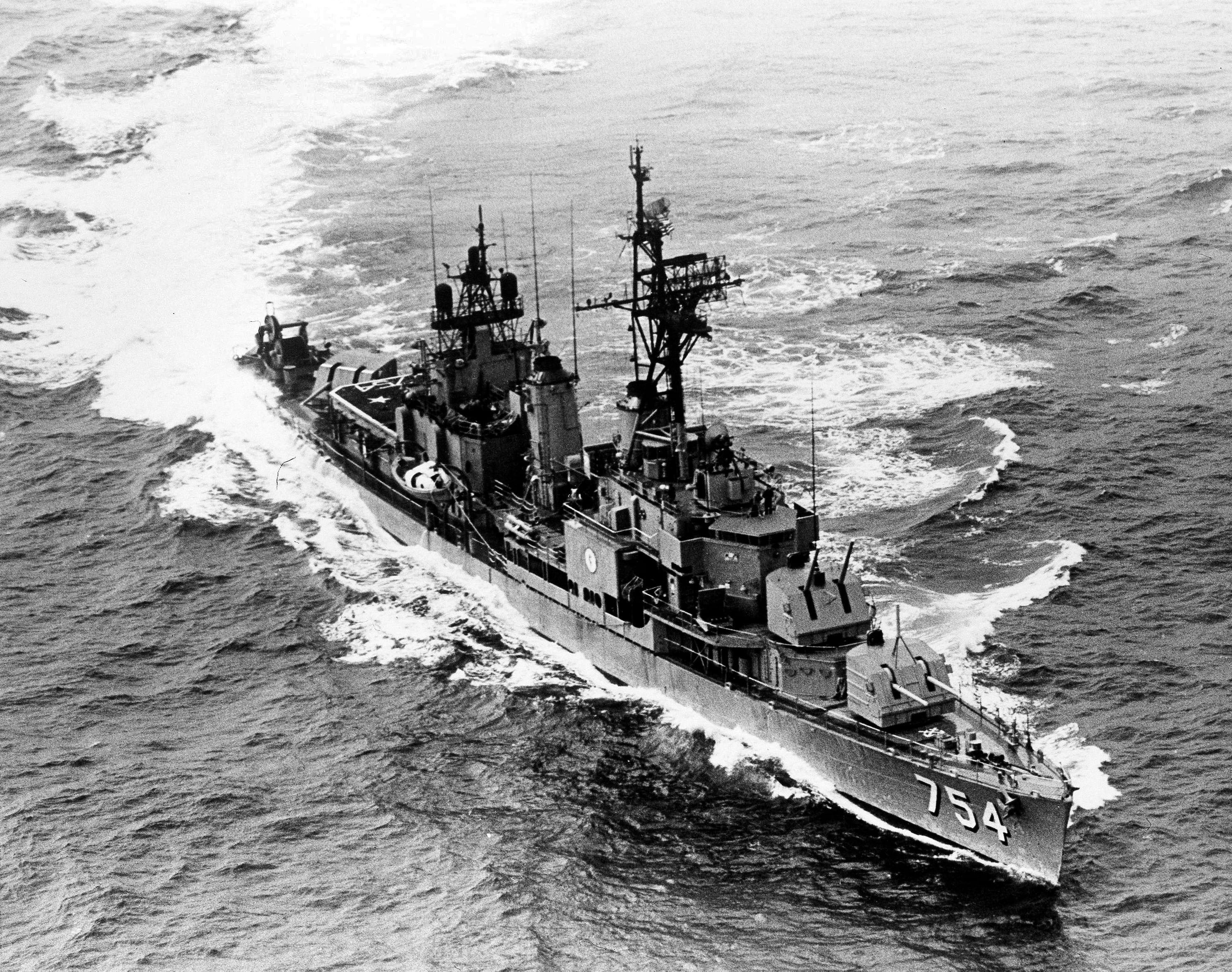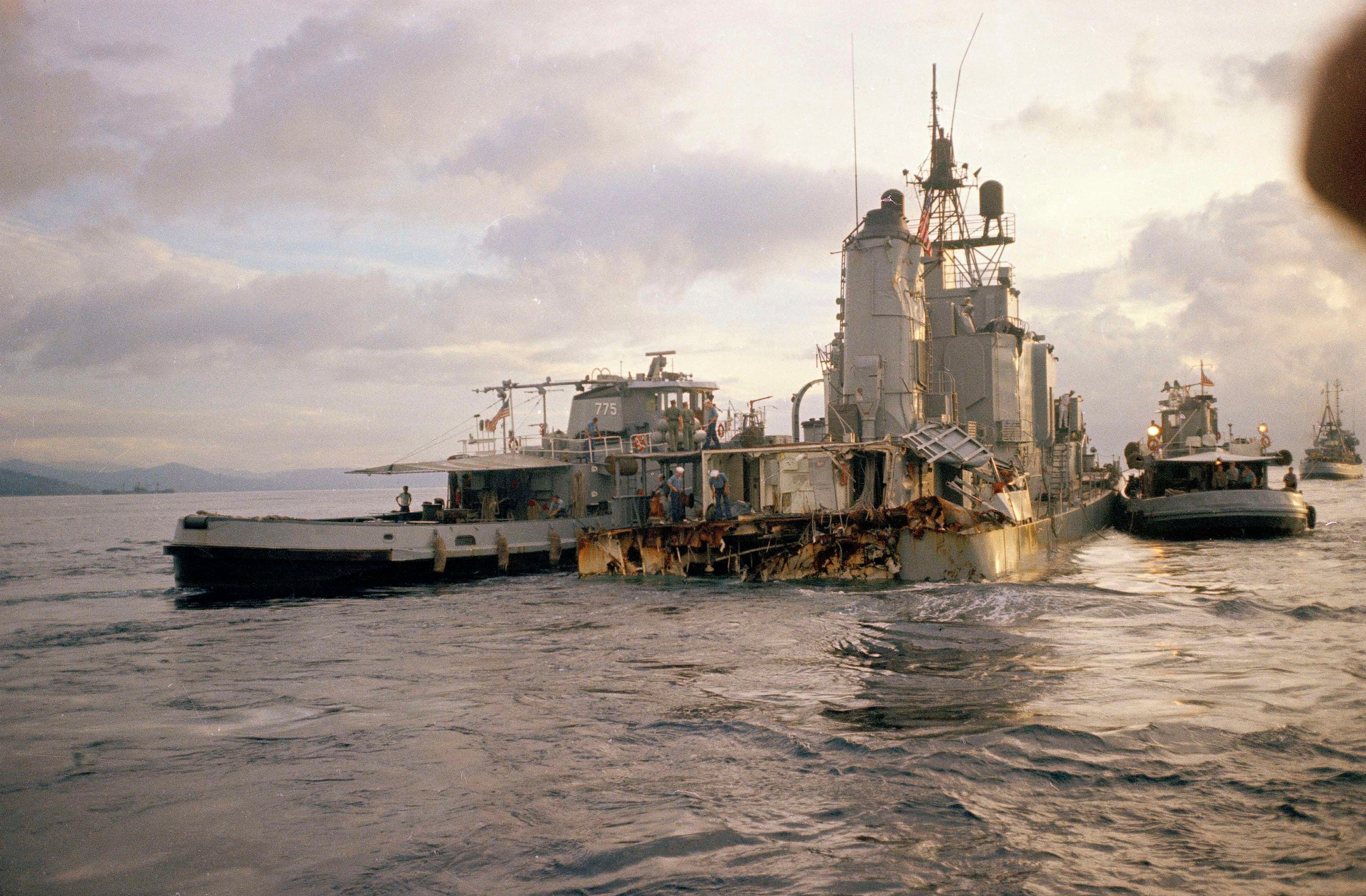In the early morning hours of June 3, 1969, the Australian aircraft carrier Melbourne collided with the American destroyer Frank E. Evans (DD-754) during a training exercise in the South China Sea, splitting the ship in half and causing the drowning deaths of 74 American sailors.
Now, a bipartisan group of senators has submitted a letter to Secretary of Defense Mark Esper to once again push to add the names of the “Lost 74” — the sailors killed on board the Evans — to the Vietnam Veterans Memorial Wall.
A dispute over the ability to add the names due to limited space has pitted supporters against the federal government for years.
Last week, Sens. Jeanne Shaheen, D-N.H, and Kevin Cramer, R-N.D., sent the letter to the secretary detailing how the sailors died in service to the country but have been denied their rightful place on the memorial.
“While the incident occurred approximately 100 miles outside of the official combat zone, the ship and a majority of the deceased sailors had previously provided naval gunfire off the coast of Vietnam, including during the Tet Offensive,” the letter states.
“74 U.S. Navy Sailors, including two Granite Staters, who conducted and supported operations during the Vietnam War gave their lives in service to our nation, but their valor goes unrecognized on the Vietnam Memorial because of an invisible line on a map – that’s unacceptable," Shaheen’s office said in a statement to Military Times.
Steve Kraus, a former second class signalman, was on the bridge of the Evans at the time of the collision. Kraus, who serves as the president of the USS Frank E. Evans Association, began advocating for the additions with the other 198 survivors after families of the deceased realized their loved one’s names were not included on the completed memorial.
Various elected officials over the past two decades have introduced bills or amendments to the annual National Defense Authorization Act to add the names, but their efforts have fallen short each time.
Kraus said the families and the association have made numerous concessions over the years, such as understanding the sailors will not be grouped together and even allowing only their first initials and last names. He said the Pentagon’s concerns over chronological order and insufficient blank spaces are unfounded or inaccurate.
“My frustration is it seems like we go through the same process, and we continue to get the same result,” Kraus told Military Times. “It seems like we move closer and closer to the final result, then to be at the last minute pushed back.”
“We are probably more adamant now then we have ever been that this is what needs to be done. [These sailors] died in defense of their country, died in the Vietnam War,” Kraus added. “The more they push back, the more we keep pushing because that’s where the guys deserve to be.”
Early last year, Sen. Cramer introduced S 849, the U.S.S. Frank E. Evans Act, the latest legislative effort to compel the Pentagon to add the names. Despite bipartisan support from members like Sen. Shaheen, the bill has lagged in committee.
In a June 2019 Congressional testimony, Daniel Smith, deputy director of the National Park Service, referenced a previous letter to the Interior Department from the Pentagon, where the department “declined to grant the exception” to the Evans incident, as the ship was operating outside the defined combat zone at the time.
“Currently, the amount of remaining blank space is extremely limited. A large-scale addition of names to the Memorial, such as those of the 74 crew members of the U.S.S. Evans…cannot be accommodated in the remaining space,” Smith said in his testimony. “If passed, S.849 would necessitate substantial modification, and possibly a wholesale replacement, of the Vietnam Veterans Memorial Wall as it exists today.”
Smith also said the department is “sympathetic to the desire to memorialize the sailors who died” and is open to working with the senators “to explore other ways to properly recognize and commemorate” the lost sailors.

To Kraus, anything less than adding the names of the 74 sailors to the memorial wall itself would be a “consolation prize” after decades of inaction.
“The Department has reviewed several requests to add the names of the 74 fallen Sailors from FRANK E. EVANS to The Wall, all of which concluded that the fallen crew of the EVANS did not meet the established criteria," a Pentagon spokesman said in an emailed statement to Military Times. "This decision does not diminish in any way the sacrifice that the EVANS’ sailors and their families have made for our Nation.”
The National Park Service did not respond to a request for comment.
“For all the parents who are gone now, like Eunice Sage, who was the mother of the three Sage brothers [killed on the Evans]. In her life, that was the only thing that really mattered for all those years was getting recognition for her boys on the wall,” Kraus said. “That was her hope and her glimmer for her life, and that didn’t happen.”
“We only have a handful of mothers and fathers who are left now. When you find an injustice like this, someone has to pick up the torch and carry it,” Kraus concluded.
The Washington Examiner first reported this story.
Dylan Gresik is a reporting intern for Military Times through Northwestern University's Journalism Residency program.




